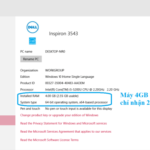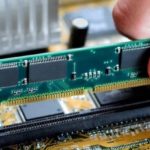To get a phone with the excellent features that are available today, manufacturers have had to assemble each tiny component to create the best possible product. Among them, the phone’s motherboard is likened to the “heart” of the device, controlling all activities. To understand more about this phone motherboard, let’s find out with FPT Shop!
What is a phone motherboard?
A phone motherboard, also known as the mainboard, is the part that contains other components of the phone, such as chips, hard drives, capacitors, etc., to create the hardware. Therefore, it can be said that the phone motherboard plays a very important role because it is the foundation that determines the operation of other components.
The motherboard is not only found in phones but is also an important and key component in other devices such as laptops, TVs, and computers.
/fptshop.com.vn/uploads/images/tin-tuc/176272/Originals/main-dien-thoai-1.jpg)
Components of a phone motherboard
CPU
CPU, or central processing unit, is an electronic circuit that performs program instructions through logical, arithmetic, and comparison operations until it carries out basic data input/output activities indicated by machine code.
To put it simply, the CPU plays an important role as the “brain” of the device. It is used to control all operations and determine the speed of the phone. This is an essential component in any phone.
- Structure of the CPU: It is made up of many tiny semiconductor balls that operate in two states: on and off to perform calculations. The lower the power consumption, the smaller the size of the semiconductor ball.
- CPU manufacturing method: Made using optical lithography, the image of the CPU is pre-made and etched onto a silicon wafer.
- CPU processing speed: Includes the computing and working frequency of the CPU, which is measured in MHz or GHz. For CPUs of the same type, a higher frequency indicates a higher processing speed. However, this is not necessarily true compared to other types of CPUs.
Some popular CPU manufacturers include Apple, Samsung, Qualcomm, MediaTek, etc.
/fptshop.com.vn/uploads/images/tin-tuc/176272/Originals/main-dien-thoai-3.jpg)
GPU
The GPU, known as a dedicated tool for 3D graphics, also has the ability to process 2D objects well. The operation of the GPU is based on a triangular model combined with an algorithm to create shading and generate a 3D environment on a 2D screen.
Currently, there are famous GPU manufacturers on the market such as PowerVR, Qualcomm, and ARM.
L1 and L2 cache memory
Cache memory has a running speed similar to the CPU, depending on the level, known as L1. This is considered the nearest and fastest cache memory of the CPU, and each core has its own L1 cache.
With the L2 level, it is cheaper and has a larger capacity than L1, but it has a relatively slower speed. The L2 cache memory serves all CPU cores and becomes the unified cache memory for the system-on-a-chip (SoC). When the requested data cannot be accommodated in L1, the CPU will access L2 before trying with the main memory.
Although slower than L1, L2 is still faster than the main memory. In addition, L2 also supports storing more data and instructions than L1.
Video and display processing chips
To support the GPU and CPU, there are dedicated parts to perform these functions. First of all, the display processor plays the role of retrieving pixel information from memory and communicating with the screen. This is an extremely important component for converting digital signals from the GPU and CPU into output data. From there, the screen can understand and display it to the viewer.
When the GPU processes 3D processes, it needs an additional component to read and encode videos. For example, when watching videos from Netflix or YouTube, all compressed video data needs to be decoded before being displayed on the screen.
When using the phone’s camera for video chat, it is similar. The data needs to be encoded before sending. This operation is performed by software but is processed by hardware for high efficiency.
Internal memory, RAM
Although data is stored in the main memory, its speed is actually very slow. That’s why RAM is needed for both computers and phones. When users use a program or application, the information is copied and stored in RAM for GPU and CPU to process. The higher the capacity, the more data of multiple running programs RAM can contain.
Connectivity protocols
It is undeniable that connectivity protocols are extremely important features of smartphones. Nowadays, smartphones often come with many options for communication and connectivity such as WiFi, 3G, 4G LTE, NFC, and Bluetooth. Of course, these protocols require hardware support, including other auxiliary chips and modems.
Other components
In addition to the main components mentioned above, the phone motherboard also includes a camera, DSP (digital signal processor), ISP (image signal processor), DAC (digital-to-analog converter), camera, speakers, etc.
Signs of a faulty phone motherboard
- The phone does not power on even though it is turned on, but the screen remains dark.
- The phone shuts down and turns off continuously.
- Unable to use connections such as Bluetooth, WiFi, 3G, 4G, etc.
- The phone continuously loses signal, the network is unstable and inconsistent.
- Since all operations go through the motherboard, almost every sign can indicate a faulty motherboard. Therefore, you should also pay attention to signs such as slow charging, flash loss, unresponsive touch screen, etc.
/fptshop.com.vn/uploads/images/tin-tuc/176272/Originals/main-dien-thoai-4.jpg)
How to check a used phone motherboard
To ensure accuracy, you should ask the seller to open the phone’s components and check the motherboard immediately. Here are some notes for checking:
- Check the socket of the chip on the motherboard to see if there are signs of soldering or deformation. Usually, soldering or deformation will appear as a light gray color.
- If the motherboard looks new but the attached components are not, it means the phone has had a new motherboard but kept the old components.
/fptshop.com.vn/uploads/images/tin-tuc/176272/Originals/main-dien-thoai-5.jpg)
How to fix a faulty phone motherboard
Because the motherboard is a hardware component, if it is faulty, you need to take the phone to a reputable service center for immediate repair!
/fptshop.com.vn/uploads/images/tin-tuc/176272/Originals/main-dien-thoai-7.jpg)






































